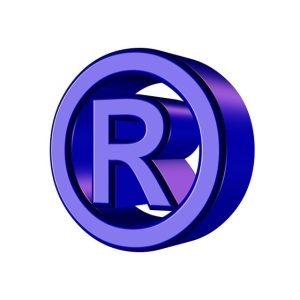Understanding and navigating UK patent law demands precise technical translations, making translation services for UK patents and patent applications indispensable. These services ensure compliance with stringent requirements, facilitate communication between inventors, lawyers, and examiners, and maintain validity/enforceability across jurisdictions. Choosing the right service is crucial, involving thorough vetting of translators, quality assurance processes, and expertise in both IP law and technical fields. Utilizing these services protects intellectual property interests, streamlines patenting processes, and averts legal pitfalls associated with inaccurate translations. As AI advances, AI-powered tools further revolutionize cross-border communications for UK patents.
Ensuring your UK patents meet legal standards is crucial for protection and enforcement. This comprehensive guide delves into the intricate world of UK patent law, highlighting key standards and requirements. We explore the vital role of translation in patent protection, addressing common challenges like language barriers and technical terms. Learn best practices for accurate translations, criteria for choosing top-tier services, and real-world case studies demonstrating the impact of poor translations. Discover future trends with AI-powered translations and their potential influence on legal compliance, especially for patent applications.
- Understanding UK Patent Law: Key Legal Standards and Requirements
- The Role of Translation in Patent Protection: Ensuring Accuracy and Compliance
- Common Challenges in Translating Patent Applications: Language Barriers and Technical Terms
- Best Practices for Accurate and Legally Sound Patent Translations
- Choosing the Right Translation Service: Criteria for Quality and Expertise
- Case Studies: When Poor Translations Lead to Legal Implications
- The Impact of Inaccurate Translations on Patent Grant and Enforcement
- Tips for Maintaining High Standards in Patent Documentation Throughout Translation
- Future Trends: AI-Powered Translations and Their Influence on Legal Compliance
Understanding UK Patent Law: Key Legal Standards and Requirements

Understanding UK Patent Law involves grasping key legal standards and requirements that govern patent applications and existing patents within the jurisdiction. The United Kingdom has a robust intellectual property (IP) framework, with strict rules to protect innovations and encourage technological advancements. For individuals and businesses looking to translate their innovative ideas into tangible forms of protection, it’s crucial to align with these standards.
Translation services play a vital role in this process, especially for non-native English speakers navigating the UK patent system. Accurate and legal translations of patent applications ensure that all technical details, claims, and descriptions meet the stringent requirements set by the UK Patent Office. These services facilitate communication between inventors, lawyers, and examiners, ensuring that ideas are conveyed clearly and effectively, ultimately contributing to a smoother patenting process.
The Role of Translation in Patent Protection: Ensuring Accuracy and Compliance

In today’s globalised market, patent protection extends beyond borders, making translation services for UK patents and patent applications an indispensable tool. Accurate and legal translations are crucial to ensure that patent documents maintain their validity and enforceability across different jurisdictions. The process involves more than just word-for-word conversion; it requires a deep understanding of both the technical terminology within the patent and the legal framework of the target country.
Professional translation services play a vital role in preserving the integrity of patent documentation. They ensure that instructions, claims, and descriptions remain precise and compliant with local laws, thereby safeguarding the rights of inventors and ensuring their inventions receive the protection they deserve on an international scale.
Common Challenges in Translating Patent Applications: Language Barriers and Technical Terms

When filing a patent application in the UK, one of the common challenges inventors face is navigating the language barrier. The official language for patent filings in the UK is English, but this can pose difficulties for applicants whose first language is not English. Technical terms and jargon specific to the field of invention often require precise translations to ensure clarity and accuracy. Misinterpretations or mistranslations could lead to rejections or misunderstandings during the examination process.
Professional translation services for UK patents play a crucial role in overcoming these challenges. These services employ skilled translators with expertise in intellectual property (IP) law and the relevant technical fields. They can provide accurate translations, ensuring that the patent application’s scope, claims, and descriptions are conveyed precisely in English. Using specialized translation services also helps maintain the original intent and meaning of the application, which is vital for a robust patent filing.
Best Practices for Accurate and Legally Sound Patent Translations

When preparing patent applications or ensuring compliance with UK patent laws, accurate and legally sound translations are paramount. The nuances of patent language require a deep understanding of both technical terminology and legal jargon. Engaging professional translation services specialised in intellectual property is key to achieving this. These experts can provide precise renderings, preserving the original intent and scope of the patent while adhering to UK legal standards.
Best practices dictate thorough vetting of translators for expertise in patent translations, ideally with experience in the specific field or industry. A rigorous quality assurance process ensures consistent accuracy. This includes back-translation by a native speaker, comparison with reference materials, and careful review by experienced professionals. Using these services for both initial applications and ongoing maintenance ensures your UK patents are effectively communicated, protecting your intellectual property interests.
Choosing the Right Translation Service: Criteria for Quality and Expertise

When ensuring your UK patents meet legal standards, especially for international applications, choosing the right translation service is paramount. Look for providers that specialize in patent documentation to guarantee precise and technically accurate translations. Expert translators should have a deep understanding of both the source and target languages, as well as specific terminology within the field of patents.
Consider services with proven experience handling complex patent applications, access to native speakers, and quality assurance processes. Reputable translation companies often offer additional services like term base management and localization, ensuring consistency and avoiding costly mistakes. Always request samples or references before committing to a provider to assess their expertise and the quality of their work.
Case Studies: When Poor Translations Lead to Legal Implications

In the realm of intellectual property, precision is key, especially when it comes to patent documentation. One seemingly minor detail often overlooked is the quality of translations. UK patents, being international assets, require accurate and legally sound translations to meet their legal standards. Poor translations can lead to misunderstandings, misrepresentations, and even legal implications.
Case studies illustrate this point vividly. Errors in patent applications have resulted in delays, additional costs, and sometimes, unfavorable court rulings. Translation services for UK patents and patent applications are therefore not just beneficial but crucial. Professional translation ensures that every term, every phrase, is conveyed correctly, avoiding potential pitfalls that could compromise the integrity of a patent’s protection.
The Impact of Inaccurate Translations on Patent Grant and Enforcement

Inaccurate translations of patent applications can have significant consequences, especially in the complex legal landscape of intellectual property rights. When translating UK patents or patent applications, precise and reliable translation services are paramount to ensuring compliance with legal standards. Mistranslations may lead to misunderstandings, misinterpretations, or even outright fraud, which could render a patent invalid. This is particularly crucial during the grant process, where clear communication of the invention’s scope and details is essential.
Enforcement of patents also heavily relies on accurate translations. In international disputes, precise documentation is vital for presenting a strong case. Improper translations might result in inadequate protection or even legal battles due to misrepresented claims. Therefore, utilizing professional translation services specializing in UK patent law is a strategic step to safeguard the integrity of your intellectual property and streamline both the grant and enforcement processes.
Tips for Maintaining High Standards in Patent Documentation Throughout Translation

Maintaining high standards in patent documentation is crucial, especially during translation. When dealing with UK patents, utilizing professional translation services is essential to ensure accuracy and compliance. These services should have a deep understanding of both legal terminology and the specific requirements for patent applications.
Consistency and precision are key; every term, description, and instruction must be translated exactly as intended. This involves not just word-for-word translations but also adapting language to fit within the formal and technical context of patent documentation. Translation services for UK patents and applications should employ native speakers with legal expertise to guarantee a flawless final document that meets all necessary legal standards.
Future Trends: AI-Powered Translations and Their Influence on Legal Compliance

As we move forward into an era defined by artificial intelligence (AI), the landscape of intellectual property (IP) protection is also evolving. AI-powered translation services are becoming increasingly sophisticated, offering unprecedented speed and accessibility in cross-border communications. This trend has significant implications for UK patents and patent applications.
These advanced translation tools can streamline the process of filing and maintaining international patent protections, ensuring that legal standards are met across diverse jurisdictions. By leveraging AI, translation services for UK patents and patent applications can provide accurate, contextually relevant translations, enhancing compliance and facilitating global innovation. This technology promises to simplify navigation in the complex web of intellectual property laws, making it easier for inventors and businesses to protect their inventions worldwide.
Ensuring your UK patents meet legal standards requires a meticulous approach, especially when it comes to patent applications. The accuracy of translations is paramount as language barriers and technical terms can significantly impact compliance. By adopting best practices, choosing reputable translation services, and staying informed about AI-powered trends, inventors can navigate the complexities of UK patent law effectively. Remember, high-quality patent documentation through translation is crucial for successful grant and enforcement, mitigating potential legal implications along the way. For businesses seeking to protect their innovations, understanding and adhering to these standards is key to a smooth intellectual property journey in the UK.
